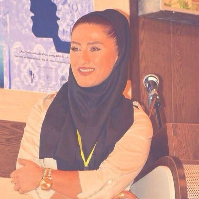Directionization in Persian: A Case Study of Body-Part Terms Based on Grammaticalization
Language structure is the product of our interaction with the world around us. The way we build discourses and develop linguistic categories can be derived from the way we experience our environment. Language encodes some points of spatial orientations which are abstract concepts such as “up”, “down”, “front”, “back” and the like by means of concrete domains e.g. “body-parts”, “landmarks”, and “verbs”. In this research, the process of changing these objective sources into spatial orientation is called “directionization”. The present study investigates directionization in Persian based on Heine's (1997) approach, and Davari and Naghzguy- Kohan's (2017a, b) model which is used to determine the dimensions of directionization, or the extent of semantic, morpho-syntactic and phonetic changes of the sources. The data were gathered from poetry and prose books, proverbs, novels, dictionaries, elementary and high school Persian textbooks, websites, and daily and television conversations. Time span includes Early New Persian (4th-13th century) and New Persian (13th century- today). Data analysis indicates that Persian uses body-parts such as head, foot, eye, heart and the like for expressing relative and metaphorical directions. Through this process, mentioned lexical sources have undergone the second degree of grammaticalization.
-
Cognitive Semantics and Grammaticalization: A Case Study of xâstan ‘to want’
*, Mehdi Sabzevari
Language Related Research, -
Are Clitics in Persian Canonical?
Behnaz Koukabi Siouki, Roya Sedigh Ziabari *,
Journal of Comparative Linguistic Researches, -
Directionization in Persian: A Case Study of Landmark Terms Based on Grammaticalization
Shokoofe Jafari, *, Roya Sedigh
Journal of Sociolinguistics,



